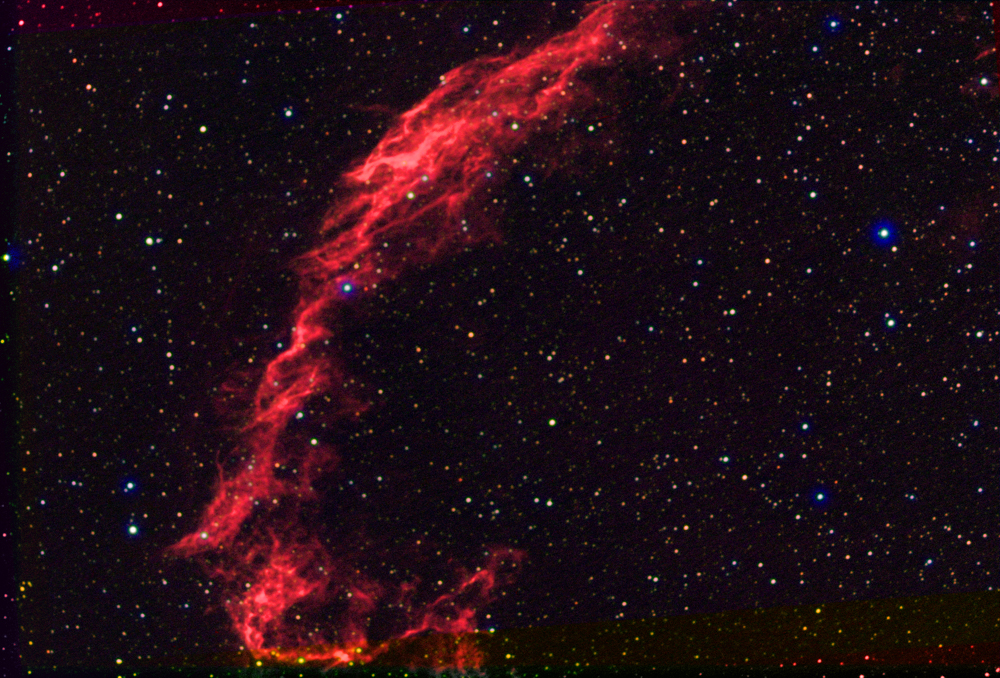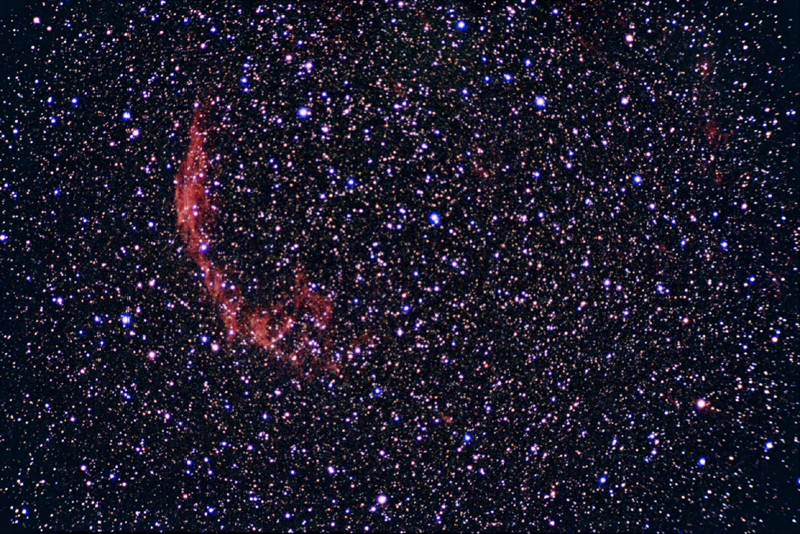
Combination of 2, 20 minute exposures. Kodak Ektachrome Elite 400 slide film.
5" f/5 refractor at prime focus.
NGC 6559 and NGC 6992 mark the eastern portion of the Veil nebula. This is also the brightest section of the nebula. In a 12" telescope, the amount of fine detail in this portion of the nebula makes for very interesting viewing.

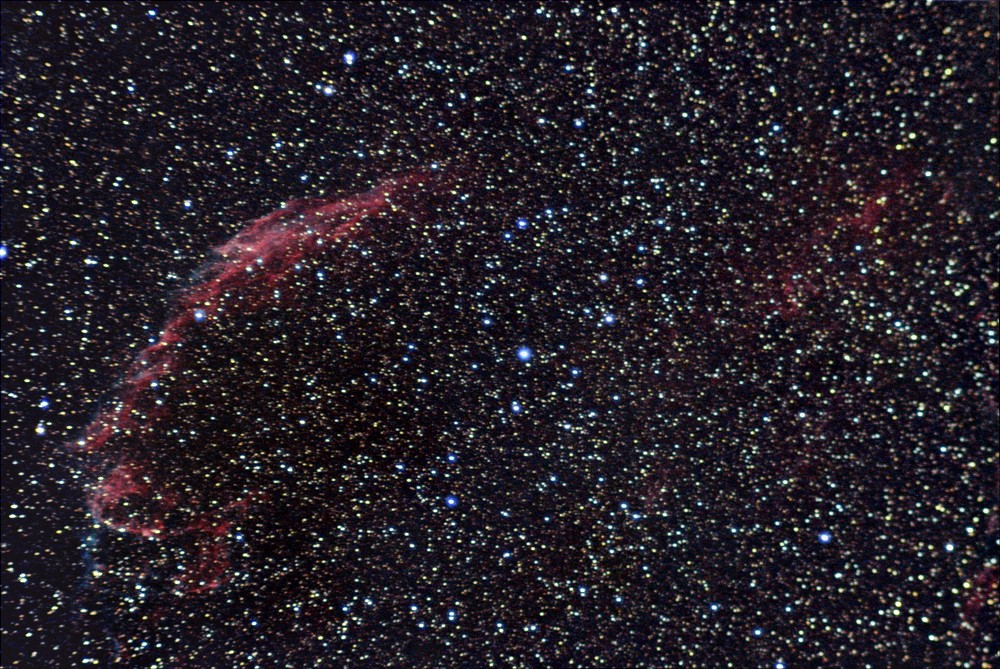
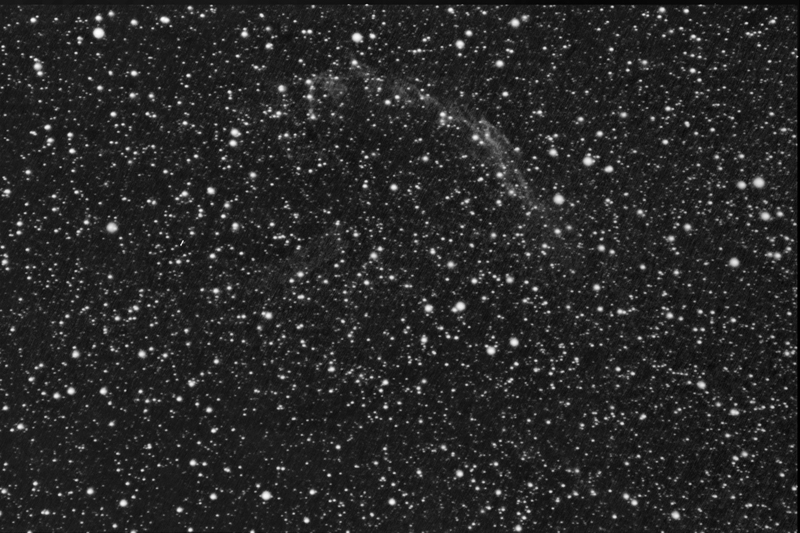
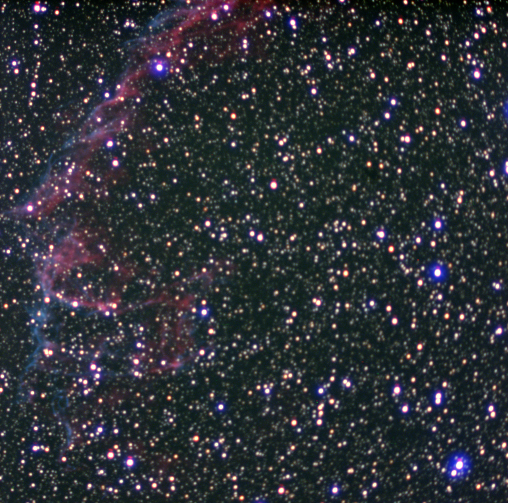
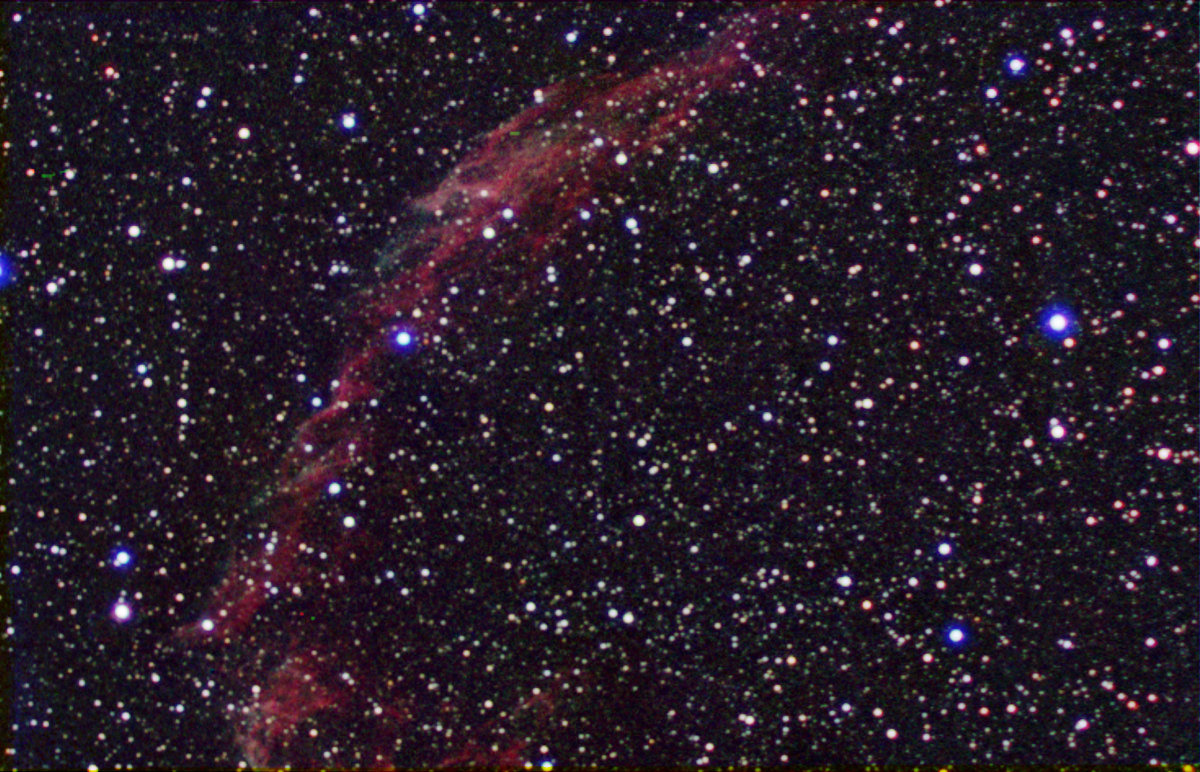
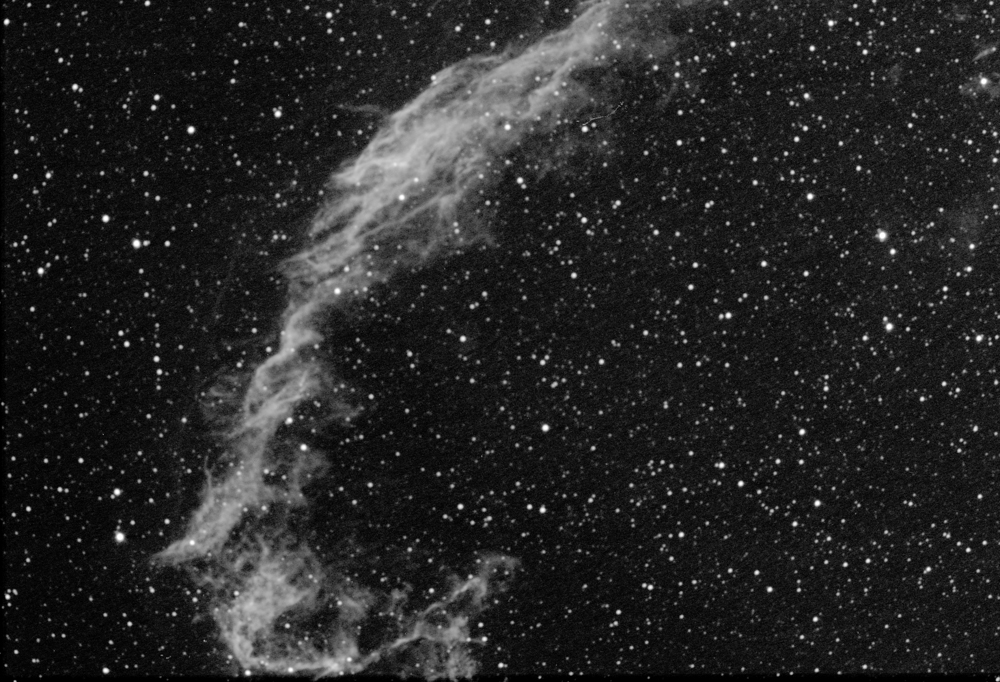
NGC 6559 is the eastern portion of the Veil nebula. This image shows the value of a narrow-band filter. It was taken under severely light-polluted skies and with a near full Moon in the sky!
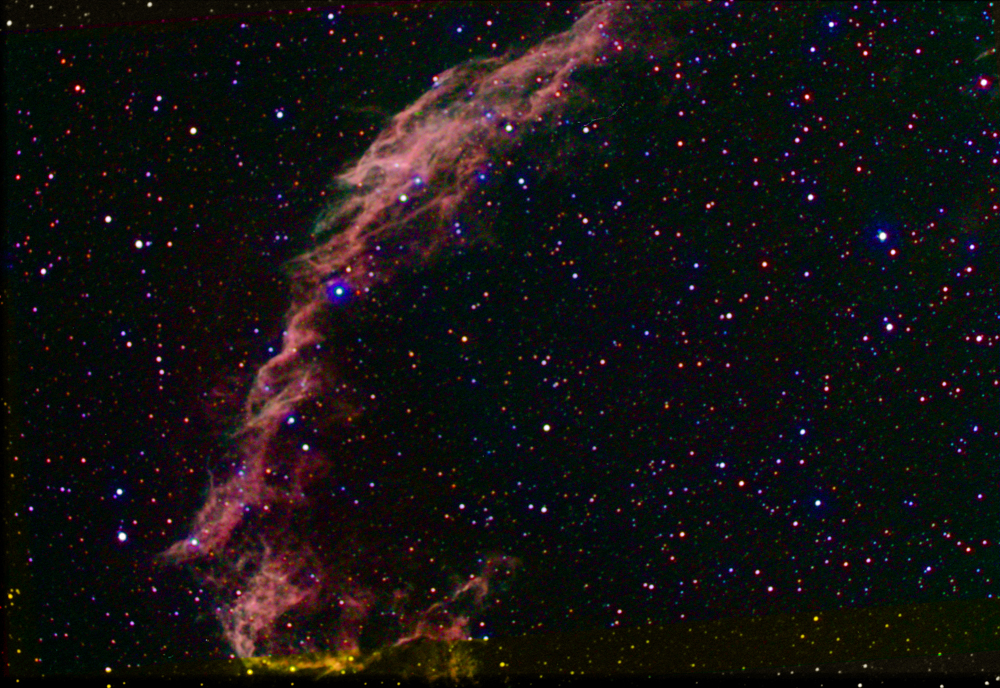
In the above image, the H-alpha image was used as the luminance layer. One problem with using a bright luminance layer is that the colour data becomes very muted and washed out. There are a number of ways to minimise this. In the next image, the H-alpha data has been used as the red channel. The result is a much richer colour.
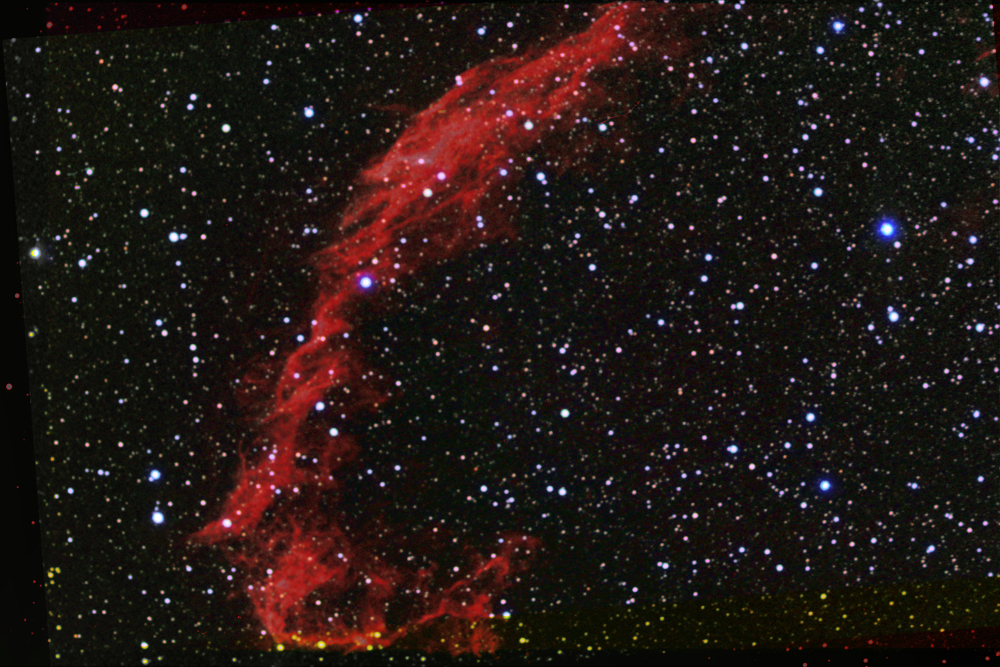
In the next image, the H-alpha data has been used as both the red channel and the luminance layer.
